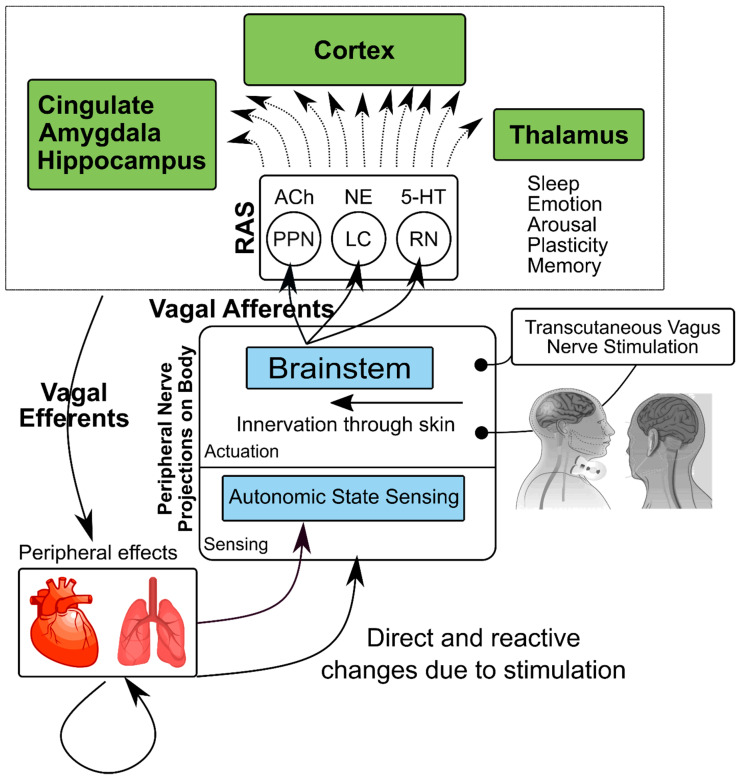Figure 1.
Model of effects of transcutaneous Vagal Nerve Stimulation (VNS) on physiological function. Stimulation of the vagus nerve in the neck as it passes through the carotid sheath (transcutaneous cervical VNS (tcVNS)) or in the ear (transcutaneous auricular VNS (taVNS)) activates the Nucleus Tractus Solitarius (NTS) in the brainstem, which has projections to other key brainstem nuclei containing cell bodies for neurotransmitters, including the locus coeruleus (LC), site of norepinephrine (NE), pedunculopontine nucleus (PPN) for acetylcholine (Ach), and raphe nucleus (RN) for serotonin (5-HT), and the reticular activating system (RAS). These regions, in turn, originate pathways to multiple brain areas involved in modulation of fear and emotion, as well as memory and neuroplasticity, including the anterior cingulate, hippocampus, amygdala, and cortex (including insula). Vagal efferents project to peripheral cardiovascular, autonomic, and inflammatory pathways. The vagus also projects information from the periphery back to the brain through afferents.

